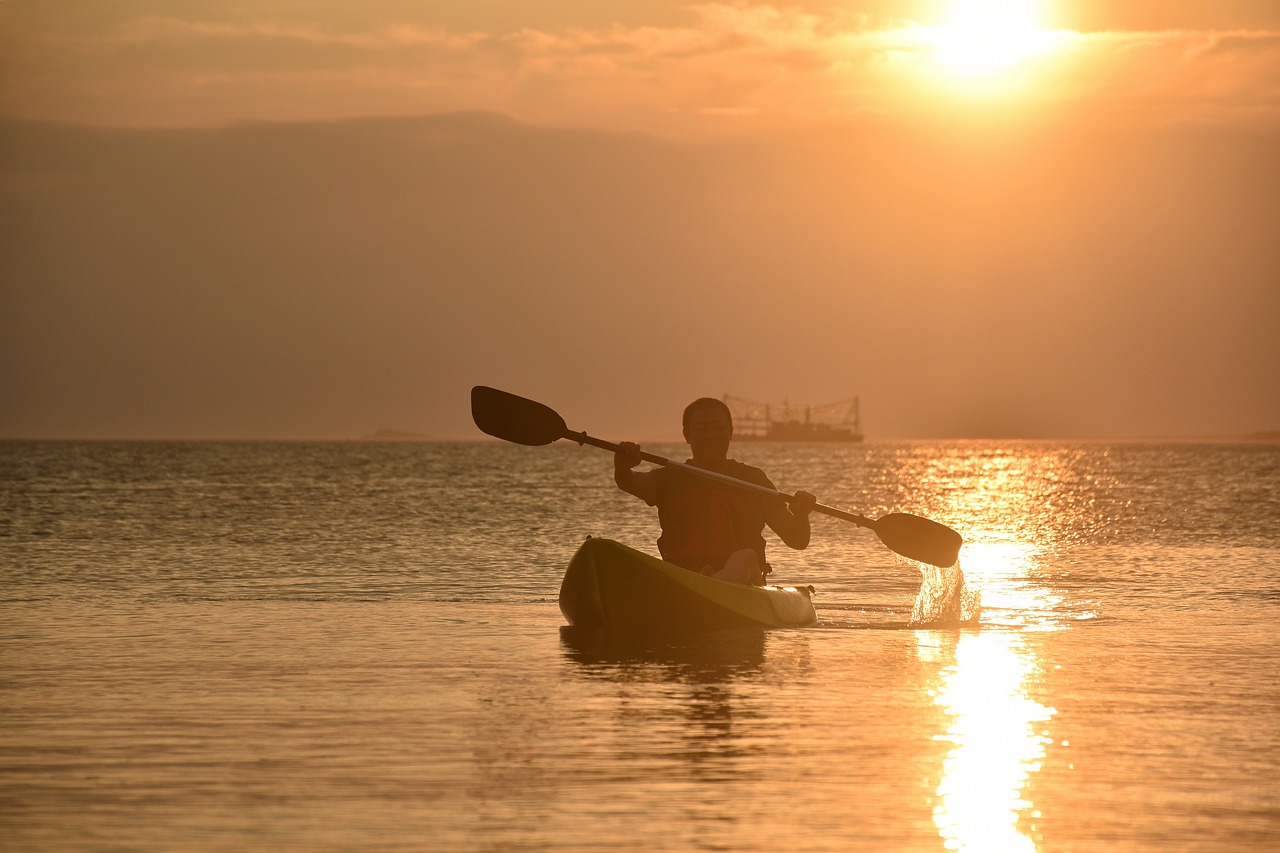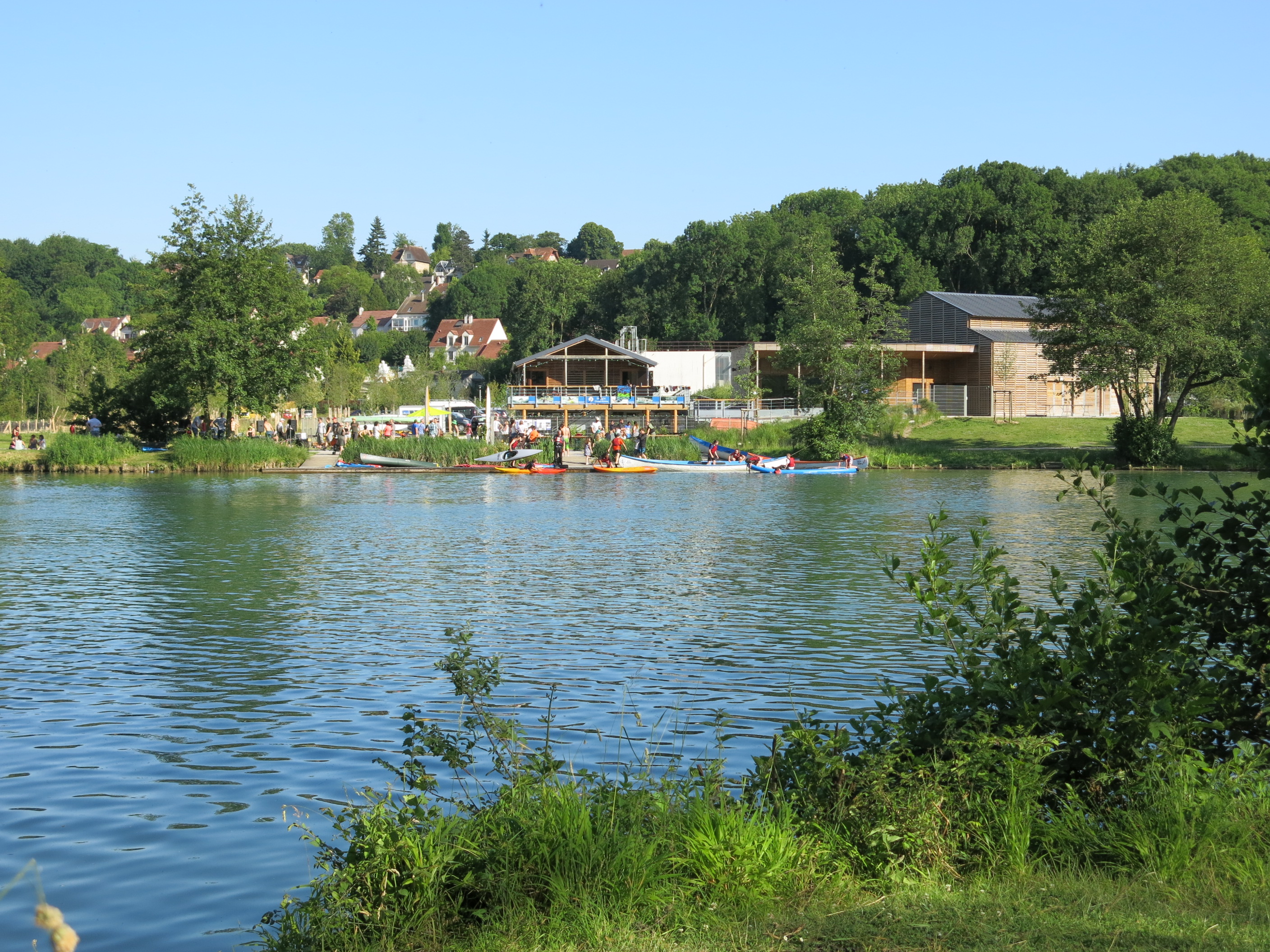A canoe motor can transform your paddling experience from a workout into a leisurely glide across the water. Have you ever wondered how a motor can enhance your canoeing adventure? Or what the best options are on the market today? You’re in the right place! With a plethora of choices available, finding the right motor can feel overwhelming. But fear not! This guide will break down everything you need to know about canoe propulsion systems, helping you choose the best one for your needs.
- Key Takeaways:
- Understanding the types of canoe motors is crucial for choosing the right one.
- Electric motors are quieter and more suitable for fishing and wildlife observation.
- Gas-powered motors provide more power but can be heavier and noisier.
- Always adhere to safety guidelines when installing and using a canoe motor.
- Research and reviews are your best friends in finding the right canoe motor.
Source: Wikimedia Commons
Types of Canoe Motors: Choosing the Right Canoe Motor
When it comes to choosing a canoe motor, understanding the different types available is essential. You essentially have two main categories: electric canoe motors and gas-powered canoe motors. Each type has its unique benefits and drawbacks, so let’s dive deeper!
Electric Canoe Motors
Electric canoe motors are a popular choice for many paddlers. They are lightweight, easy to install, and silent, making them perfect for fishing or observing wildlife without disturbing the natural peace. These motors typically run on batteries, which means you need to consider battery life and charging options. A well-chosen electric motor can offer great canoe performance, allowing you to cover more ground without the physical toll of paddling.
Gas-Powered Canoe Motors
If you’re looking for power and speed, a gas-powered canoe motor might be the way to go. These motors are typically more powerful than their electric counterparts, allowing you to travel faster and handle more challenging waters. However, they come with trade-offs—gas motors are heavier, noisier, and require regular maintenance. If you’re planning on long-distance trips or navigating large bodies of water, a gas-powered motor could be a better fit.
Comparative Table of Canoe Motor Types
| Feature | Electric Canoe Motor | Gas-Powered Canoe Motor |
|---|---|---|
| Weight | Lightweight | Heavier |
| Noise Level | Silent | Noisy |
| Maintenance | Low | High |
| Power | Moderate | High |
| Cost | Generally lower | Generally higher |
How to Install a Canoe Motor
Installing a canoe motor might sound daunting, but it doesn’t have to be! Depending on the type of motor you choose, the installation process can vary significantly. Here are some general steps to guide you through:
- Choose the Right Location: Find a suitable spot on your canoe where the motor can be securely mounted. Ensure it’s balanced and won’t affect stability.
- Gather Your Tools: You’ll typically need a drill, screws, and potentially some brackets, depending on your motor’s design.
- Read the Manual: Always refer to the manufacturer’s instructions for specific installation guidance.
- Secure the Motor: Follow the instructions to attach the motor, ensuring it’s firmly in place.
- Test the Setup: Before heading out, do a test run in calm waters to ensure everything is functioning correctly.
For a visual guide, check out this video demonstration on installing electric motors on small boats. It’s a game-changer!
Canoe Motor Reviews: What are the Best Canoe Motors?
When it comes to selecting the best canoe motor, reviews can be a lifesaver. Whether you’re looking for a lightweight canoe motor or a robust gas-powered engine, customer feedback provides insight into performance and reliability. Here are some top-rated choices:
- Newport Vessels 55 Pound Thrust Electric Motor: This motor is lightweight, easy to install, and offers excellent thrust for its size. Ideal for recreational paddlers.
- Minn Kota Endura C2 30: Another fantastic electric option, it’s known for its efficiency and long battery life, making it perfect for extended outings.
- Honda BF2.3: If you’re leaning towards gas, this motor is compact, powerful, and surprisingly quiet for a gas option.
- Watersnake T24 Saltwater Motor: A good choice for saltwater adventures, this electric motor is durable and corrosion-resistant.
Safety Considerations for Using a Canoe Motor
Engaging in any water sport comes with its own set of risks. When using a canoe motor, safety should always be a priority. Here are some tips to keep in mind:
- Wear a Life Jacket: Always have a personal flotation device on board for everyone, regardless of your skills.
- Check Local Regulations: Some waterways have restrictions on motorized boats, so be sure to verify the rules.
- Maintain Your Equipment: Regularly inspect your motor and canoe for wear and tear. This will reduce the risk of malfunction while out on the water.
- Have a Safety Kit: Carry a first aid kit, flares, and a whistle. Being prepared can make all the difference.
Innovations in Canoeing Equipment: The Future of Canoe Motors
The world of canoeing innovation is rapidly evolving. With advancements in technology, we’re seeing new features that enhance the user experience. For instance:
- Solar-Powered Motors: Imagine never needing to recharge a battery again! Solar-powered options are becoming more viable and could revolutionize the way we think about canoe propulsion.
- Smart Motors: These motors can connect to your smartphone to provide real-time data on battery life, distance traveled, and even GPS tracking.
- Lightweight Materials: Manufacturers are focusing on creating motors that are not only powerful but also incredibly lightweight, making them easier to transport and install.
Conclusion
Choosing the right canoe motor can significantly enhance your outdoor adventures, whether you’re fishing, exploring, or just enjoying a leisurely day on the water. With the right information, you can make an informed decision that suits your style and needs. Remember to consider the type of motor, installation process, and safety precautions. Happy paddling!
Frequently Asked Questions (FAQs)
Q: What kind of motor can you put on a canoe?
A: You can put either an electric motor or a gas-powered motor on a canoe. Electric motors are quieter and easier to maintain, while gas motors provide more power and speed. When selecting a motor, consider the size, weight, and type of water you’ll be navigating.
Q: Can you put a trolling motor on a regular canoe?
A: Yes, you can attach a trolling motor to a regular canoe. Trolling motors are often lightweight and can be mounted easily, making them an excellent choice for enhancing your canoeing experience.
Q: How big of an electric motor for a canoe?
A: The size of the electric motor you need depends on the canoe’s weight and the type of water you plan to navigate. Generally, a motor with around 30 to 55 pounds of thrust is suitable for most recreational canoes.
Q: How fast will a trolling motor move a canoe?
A: A trolling motor can generally move a canoe at speeds between 3 to 5 miles per hour, depending on the motor’s thrust and the canoe’s weight. Factors like wind and water conditions also play a role in speed.


